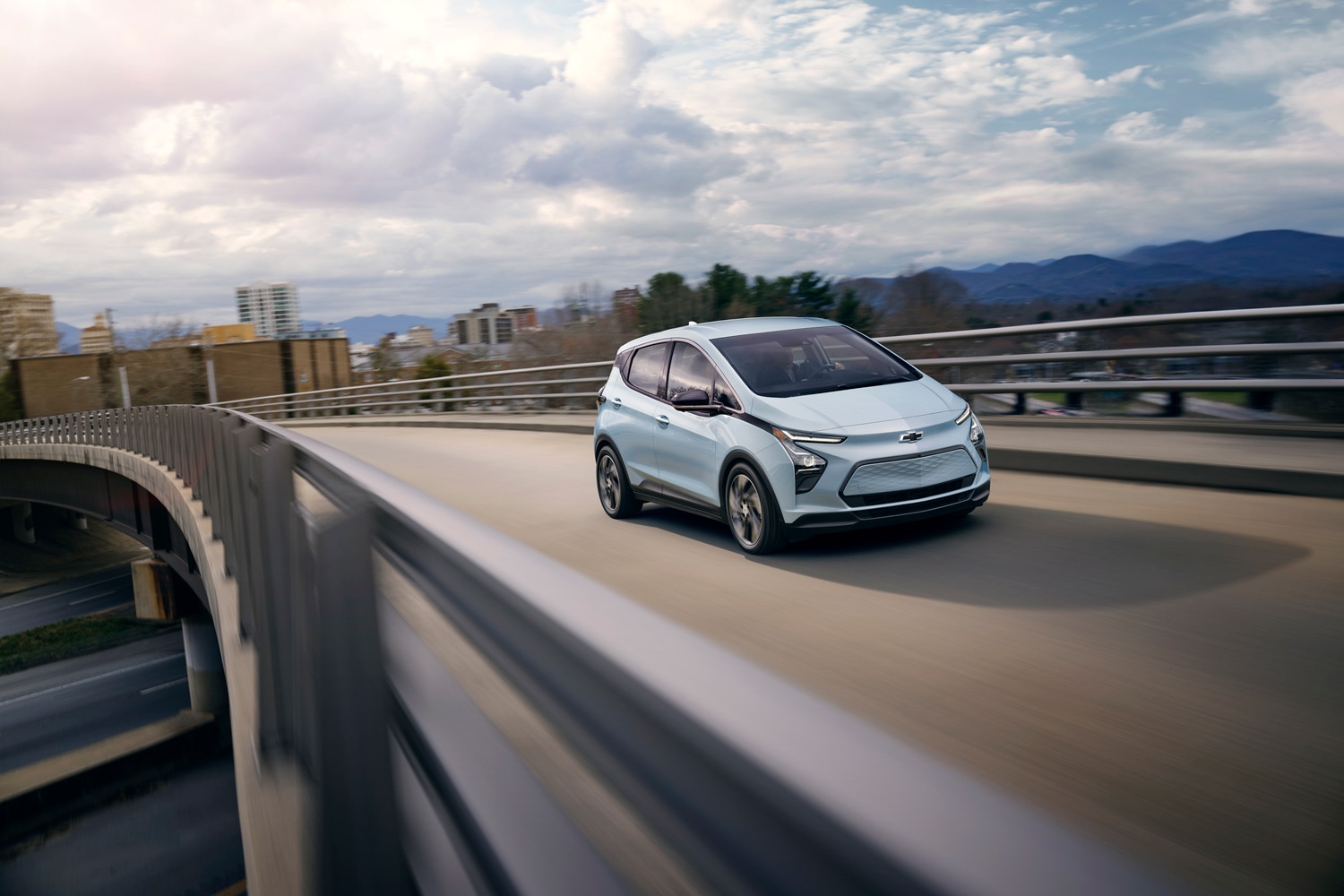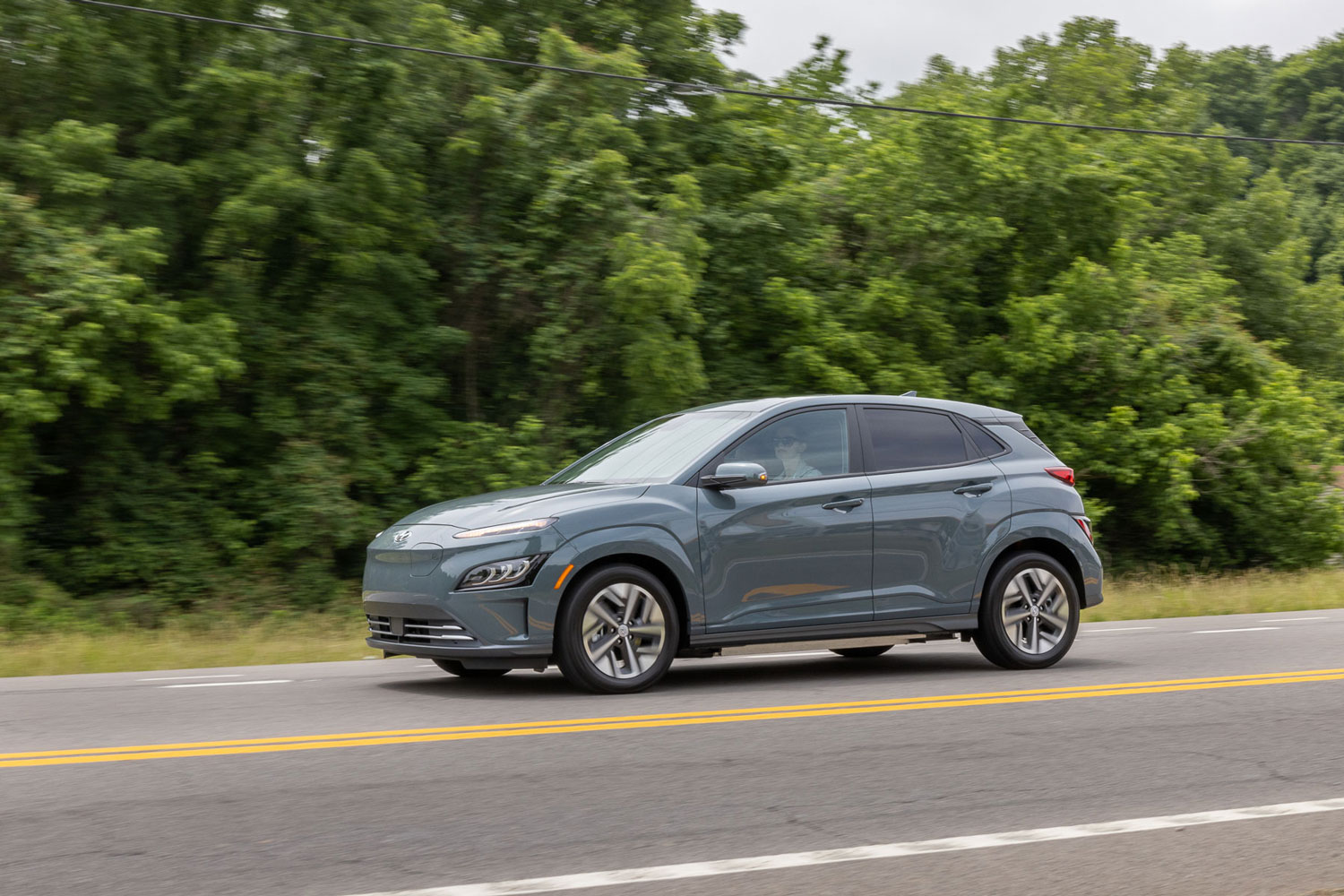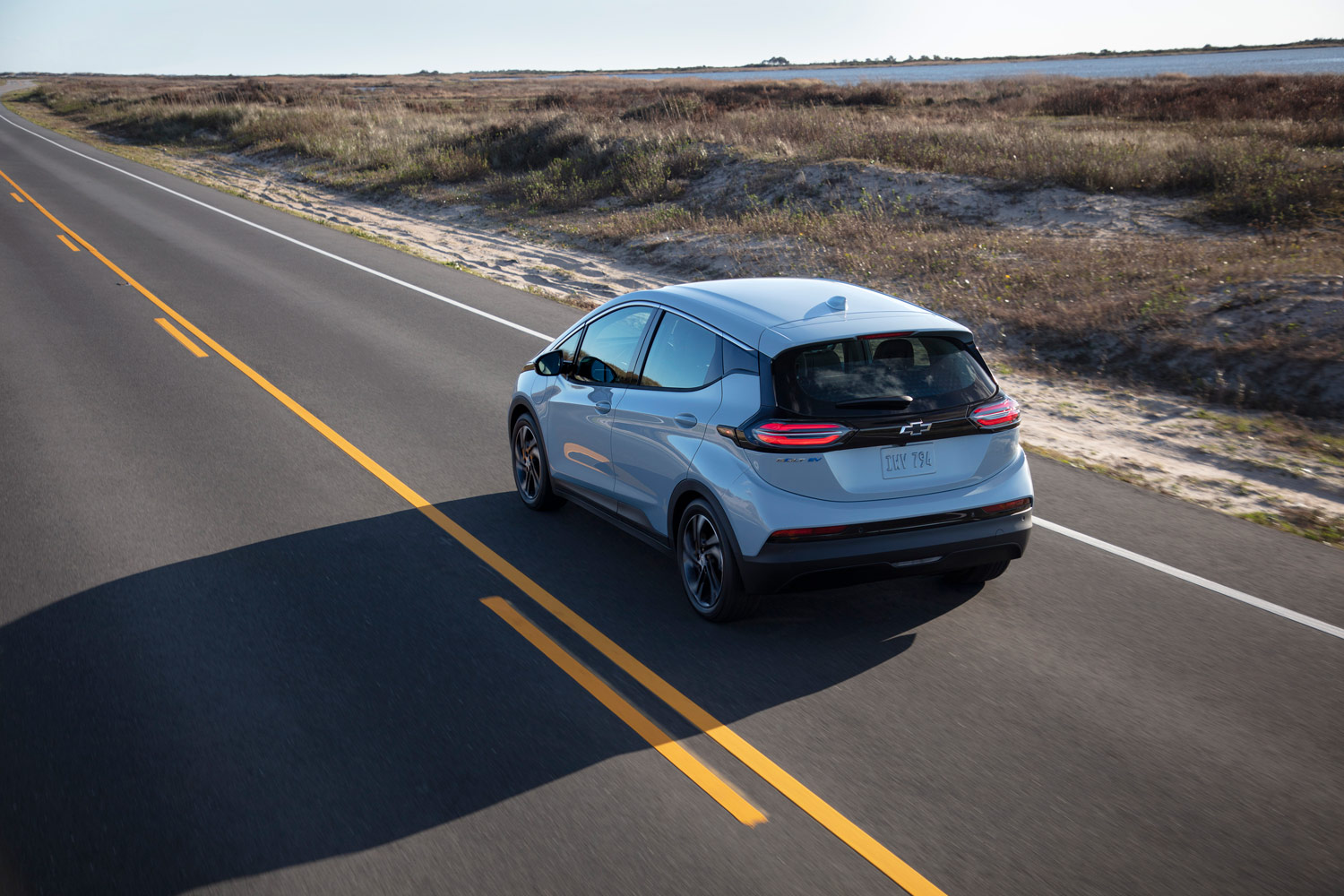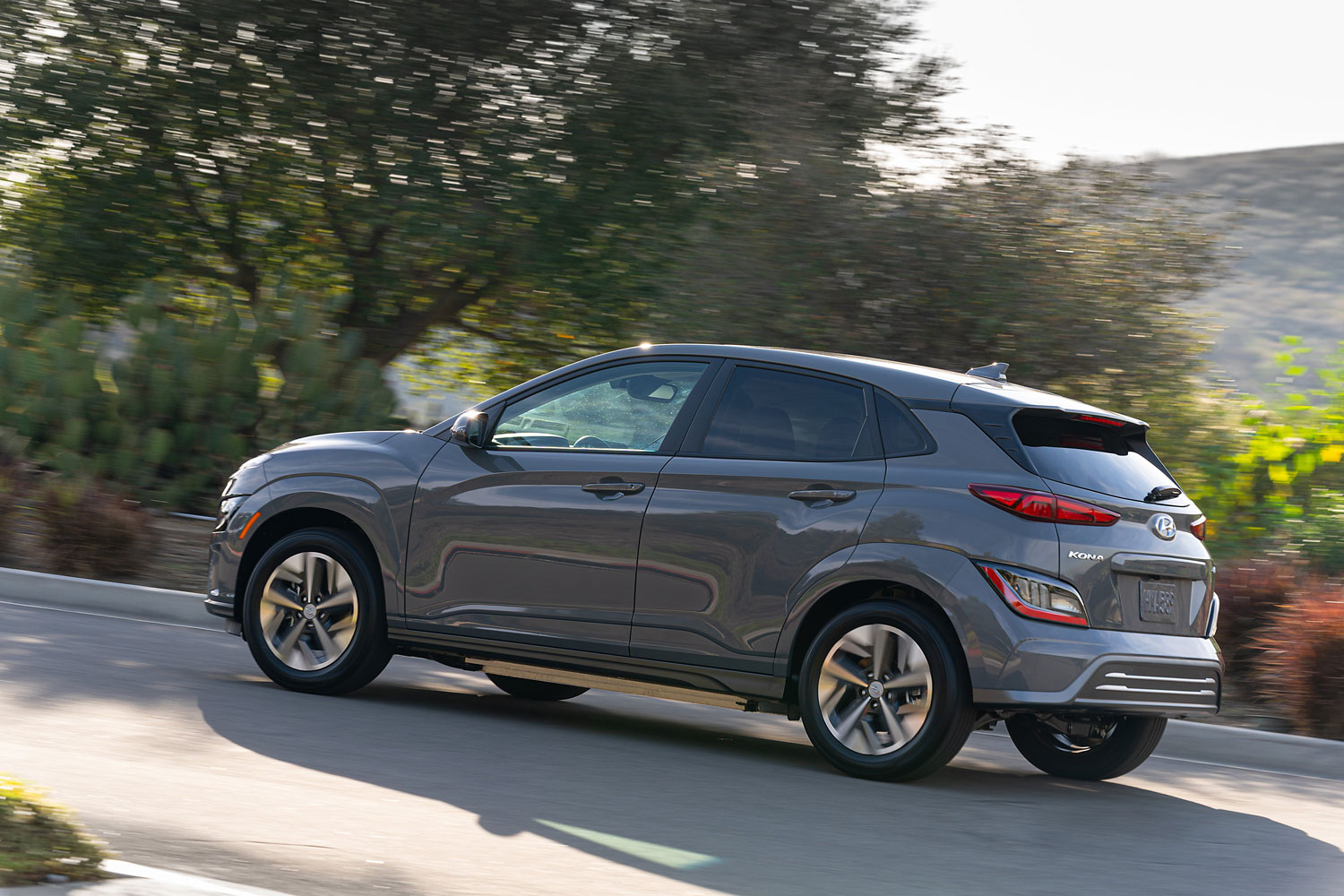Compared: 2023 Chevrolet Bolt EV vs. 2023 Hyundai Kona Electric
With high seating positions and good cargo space, these two practical choices square off.
 Chevrolet | Hyundai
Chevrolet | Hyundai
Article QuickTakes:
Electric vehicles certainly have come a long way in the past five years. The practical Chevrolet Bolt took the market by storm in 2017, followed by compact EVs that added style and a myriad of features to the landscape. Let’s take a look at today’s version of the “granddaddy” 2023 Chevrolet Bolt and a new kid on the block, the 2023 Hyundai Kona Electric, to see how they compare in price, features, and range.
 Chevrolet
Chevrolet
2023 Chevrolet Bolt EV vs. 2023 Hyundai Kona Electric: Price
The Chevrolet Bolt is available in all 50 states and wins the pricing game with a starting cost of around $27,000 for the base 1LT trim and nearly $31,000 for the 2LT. The Hyundai Kona, meanwhile, is sold in only 26 states and its starting price is much higher than the Chevy's. The Korean EV starts around $35,000 for the base SE model, while the top Limited trim starts at almost $43,000.
 Hyundai
Hyundai
Thanks to the Inflation Reduction Act of 2022, an EV is now eligible for a federal tax credit only if it’s final assembly is in North America. The Kona is built in Korea, so don’t expect that $7,500 tax credit. However, there may be state incentives that could help mitigate that higher price.
The Inflation Reduction Act also removed the old 200,000-unit sale limit, so the Bolt is eligible again for a federal tax credit. However, there were many changes to the eligibility requirements for the EV tax credit, including buyer income limits, so consult your dealer or tax advisor to see if you qualify.
 Chevrolet
Chevrolet
2023 Chevrolet Bolt EV vs. 2023 Hyundai Kona Electric: Features
When it comes to features, there are tradeoffs in both vehicles. The Kona has some unique available tech features, such as a digital key that allows Android users to unlock and start their cars with their phone. The Limited trim also gets Hyundai’s advanced driving assistance system known as Highway Drive Assist along with rain-sensing wipers. The Kona also comes standard with heated seats, while the Bolt offers them only on the upper trim.
 Hyundai
Hyundai
To get wireless Apple CarPlay and Android Auto on the Kona, buyers must stick with the base trim and its 8.0-inch touchscreen. Wireless capability isn’t available on higher trims with the 10.3-inch screen, and users must instead plug their phones in to connect their smartphone. Meanwhile every trim of the Bolt gets a 10.2-inch touchscreen with wireless smart phone connectivity. Only the top trim of the Kona gets LED headlights, while the Bolt offers them standard. Finally, the Kona trades punches with the Bolt on cargo space, with more room both behind the rear seats but less overall when compared to the Chevrolet.
If a battery warranty is a priority, Hyundai offers a 10-year/100,000-mile limited warranty. The Bolt’s warranty is good for eight years or 100,000 miles.
 Chevrolet
Chevrolet
2023 Chevrolet Bolt EV vs. 2023 Hyundai Kona Electric: Range
The Chevrolet Bolt EV gets 259 miles of range out of its 65 kWh battery pack. The Hyundai Kona Electric turns in nearly the exact numbers: 258 miles of range with a 64 kWh battery pack.
Where the two diverge is in charging rates. The Bolt carries an 11.5 kW onboard charger. This converts the AC power from a Level 2 charger that you’d install in your home to the DC power the battery needs. You can get a full charge in about seven hours. Meanwhile, the Kona’s onboard charger is only 7.2 kW, and it requires more than nine hours for a full charge.
 Hyundai
Hyundai
Neither car is great when it comes to DC fast charging, the kind you find at public charging stations. While most new EVs can accept a charging rate of 150 kW or more, the Bolt can only accept 55 kW. Under the right conditions that can give you 100 miles of range in 30 minutes. The Kona can accept electrons at a faster rate: 75 kW. Hyundai says the Kona can achieve an 80 percent state of charge in about 47 minutes.
Both manufacturers offer some form of charging incentive. Chevrolet will cover the installation of a Level 2 home charger for Bolt drivers, while Hyundai offers 250 kWh of free charging from Electrify America for three years.



